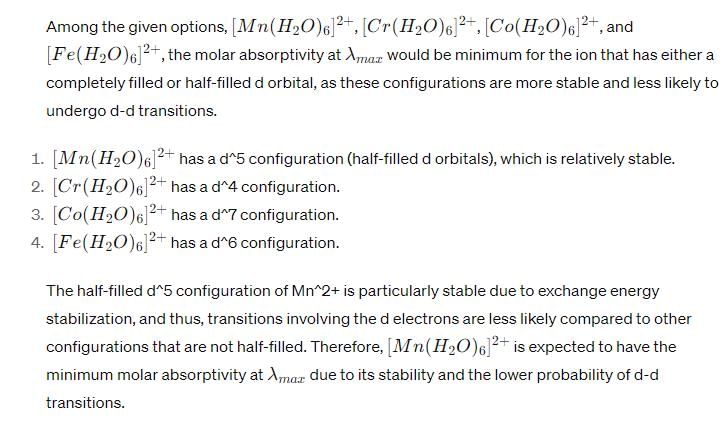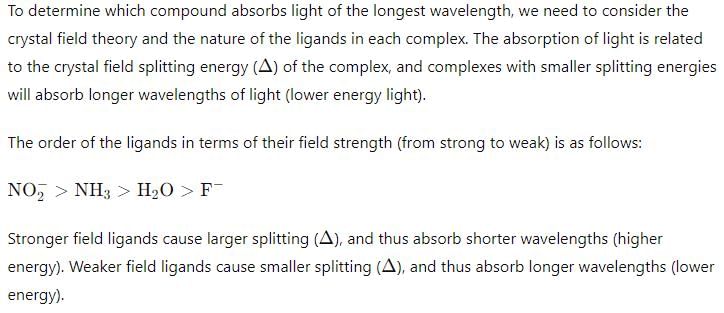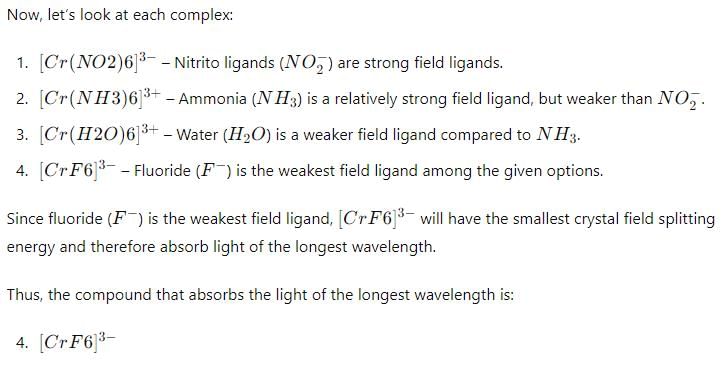Test: Color & Electronic Spectra - Chemistry MCQ
15 Questions MCQ Test - Test: Color & Electronic Spectra
The red color of oxyhaemoglobin is mainly due to the
The bright yellow color of [Cu(phen)2]+ (phen=1, 10-phenanthroline) is due to
The compound that absorbs the light of the longest wavelength is
The complex which exhibits lowest energy electronic absorption band is:
Which one of the following complex ions shows minimum intensity of absorption in the UV-Visible region?
The lowest energy d-d transition in the Cr(III) complexes varies in the order
Which of the following compounds shown intervalence charge transfer transition
Among the species given, the one possessing charge-transfer transition in the visible region is:
Amongst the following, the strongest oxidizing anion is:
The compound which shows Metal to Ligand charge transfer is:
Which of the following transitions are of weak intensities and lie in the visible region?

















